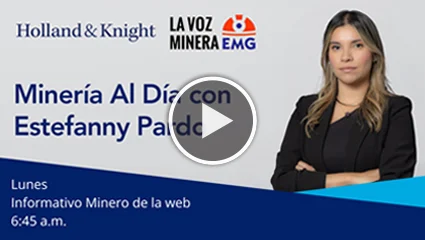Key Highlights of the Section 48 ITC Final Regulations
Highlights
- The U.S. Department of the Treasury and IRS have issued Final Regulations regarding the investment tax credit (ITC) for Section 48 of the Internal Revenue Code.
- The regulations include the ITC for energy generation, energy storage technology, qualified biogas property and interconnection property.
- This Holland & Knight alert highlights key elements of the Final Regulations and how taxpayers can qualify for the ITC.
The U.S. Department of the Treasury and IRS on Dec. 12, 2024, issued Final Regulations regarding the investment tax credit (ITC) for Section 48 of the Internal Revenue Code, including the ITC for energy generation, energy storage technology, qualified biogas property and interconnection property. Generally, the Final Regulations adopt the rules provided under the Proposed Regulations, with certain key changes. (For more information on the Proposed Regulations, see Holland & Knight's previous alerts, "Breaking Down the Section 48 Investment Tax Credit Proposed Regulations," Nov. 28, 2023, and "Treasury Department, IRS Correct Section 48 Proposed Regulations on Qualified Biogas Property," Feb. 20, 2024.)
Below, we summarize the key changes of the Final Regulations.
Qualified Biogas Property
- Definition. The Final Regulations clarify which assets are treated as "functionally interdependent" and which are "integral parts" of qualified biogas property.
- Under the Inflation Reduction Act (IRA), "qualified biogas property" is defined as a system that converts biomass into a gas that consists of not less than 52 percent methane by volume or is concentrated by such system into a gas that consists of not less than 52 percent methane and captures such gas for sale or productive use and not for disposal via combustion. The statute also provides that qualified biogas property also includes property that cleans or conditions such gas.
- The ITC is calculated as a percentage of the tax basis of qualified investment in "energy property," which is defined to include all "functionally interdependent" components of property owned by the taxpayer that are operated together and that can operate apart from other energy properties within a larger energy project.
- Integral property identified below is includible in the ITC basis if it is owned by the same taxpayer that owns the unit of energy property.
- Measurement Point. Under the Final Regulations, the measurement point to determine whether the 52 percent methane requirement is satisfied was moved from a point prior to the gas upgrading equipment (per the Proposed Regulations) to the point at which the biogas exits the qualified biogas property.
- Flaring. The Final Regulations recognize that some flaring of biogas may be necessary at a renewable natural gas (RNG) facility and provide that the flaring of biogas will not disqualify qualified biogas property from the ITC, provided the primary purpose of the qualified biogas property is the sale or productive use of biogas and any flaring is in compliance with all relevant federal, state, regional, Tribal and local laws and regulations.
Functionally Interdependent | Integral Part |
|
|
Holland & Knight Insight |
Thermal Energy Storage
- Definition. The Final Regulations clarify key aspects of the definition of thermal energy storage property.
- Thermal energy storage property does not include property that transforms other forms of energy into heat in the first instance.
- Property that "removes heat from, or adds heat to, a storage medium for subsequent use," as used in the statute, is property that is designed with the particular purpose of substantially altering the time profile of when heat added to or removed from the thermal storage medium can be used to heat or cool the interior of a residential or commercial building.
- Thermal energy storage property may store thermal energy in an artificial pit, aqueous solution or a solid-liquid phase change material, in addition to the underground tank or a borehole field, in order to be extracted for later use for heating and/or cooling.
- A heat pump system that transfers heat into and out of a storage medium qualifies as thermal energy storage property.
- Safe Harbor. The Final Regulations also provide a safe harbor for thermal energy storage property. Under this safe harbor, if the thermal energy storage property can store energy that is sufficient to provide heating or cooling of the interior of a residential or commercial building for a minimum of one hour, it is deemed to have the purpose of substantially altering the time profile of when heat added to or removed from the thermal storage medium can be used to heat or cool the interior of a residential or commercial building.
Aggregation Rules/Treatment of Energy Property as a Single Project
Under the Proposed Regulations, multiple energy properties would be considered one energy project if at any point during construction they are owned by a single taxpayer and two or more of the seven aggregation factors are present: 1) The energy properties are constructed on contiguous pieces of land, 2) the energy properties are described in a common power purchase, thermal energy or other offtake agreement or agreements, 3) the energy properties have a common intertie, 4) the energy properties share a common substation or thermal energy offtake point, 5) the energy properties are described in one or more common environmental or other regulatory permits, 6) the energy properties are constructed pursuant to a single master construction contract or 7) the construction of the energy properties is financed pursuant to the same loan agreement.
The Final Regulations were revised to require that four or more aggregation factors be present and that the aggregation factors may be assessed, at the taxpayer's choice, either at any point during construction or during the taxable year the energy properties are placed into service.
- In the preamble to the Final Regulations, the Treasury Department and IRS explain that that the test provided in the Proposed Regulations was too rigid and could have unintended impacts, such as preventing small rooftop solar installations from being eligible for the 1 megawatt (MW) exception and treating multiple energy properties that are located in different states as a single energy project.
Holland & Knight Insight |
In addition to the changes discussed above, the Final Regulations generally retained several key provisions that appeared in the Proposed Regulations.
Separate Ownership
- Basic Rule. The Final Regulations largely retain the separate ownership rules from the Proposed Regulations. Taxpayers can claim the ITC only to the extent that the taxpayer has a basis in the energy property or unit of energy property (for clarity, the unit of energy property is the relevant functionally interdependent property).
- The Treasury Department clarified in the preamble that taxpayers cannot claim the ITC on components that make up a unit of energy property if the taxpayer does not own at least a fractional interest in the entire unit of energy property.
Holland & Knight Insight |
80/20 Rule
- Basic Rule. The Final Regulations largely retain the long-standing 80/20 Rule, which requires that no more than 20 percent of the cost of the unit of energy property be attributable to used equipment.
Holland & Knight Insight |
Power Conditioning and Transfer Equipment
The Final Regulations are substantially similar to the Proposed Regulations regarding the treatment of power conditioning and transfer equipment.
Holland & Knight Insight |
Interconnection Property
- Measurement of Capacity. The Final Regulations do not change the rule from the Proposed Regulations that the 5 MW (AC) limitation for qualified interconnection property is measured at the energy property level (i.e., instead of at the energy project level). As a result, the owner of a large renewable energy project can claim the Section 48 ITC for qualified interconnection property if the nameplate capacity of each energy property incorporated into that project is not more than 5 MW (AC). It appears that for solar, each energy property would be defined as the property required for generation up to each inverter. For wind, each turbine would be a single energy property.
- Impact of Interconnection Property on Credit Amount. In the preamble to the Final Regulations, the Treasury Department and the IRS confirmed that qualified interconnection property is not actually part of an "energy property" and, as a result, is not subject to the PWA requirements and not taken into account in determining whether an energy property satisfies the requirements for the domestic content or energy community bonus credit amounts.
- Reimbursement by Utilities. The Final Regulations revise the proposed rule that required reimbursements from a utility be accounted for when determining ITC-eligible interconnection costs (i.e., by reducing taxpayers' expenditures to determine eligible costs). Under the final rules, the determination of whether qualified interconnection costs have been paid or incurred by the taxpayer and whether cost is reduced by virtue of transactions with the utility or with a third party are now based on generally applicable federal tax principles. As such, certain situations may arise where reimbursement for interconnection costs may cause some interconnection costs to not be eligible for the ITC.
To receive additional insights from the team, please subscribe to our alerts and access the Holland & Knight Inflation Reduction Act Tax Resource Library.
Information contained in this alert is for the general education and knowledge of our readers. It is not designed to be, and should not be used as, the sole source of information when analyzing and resolving a legal problem, and it should not be substituted for legal advice, which relies on a specific factual analysis. Moreover, the laws of each jurisdiction are different and are constantly changing. This information is not intended to create, and receipt of it does not constitute, an attorney-client relationship. If you have specific questions regarding a particular fact situation, we urge you to consult the authors of this publication, your Holland & Knight representative or other competent legal counsel.
Related Insights


